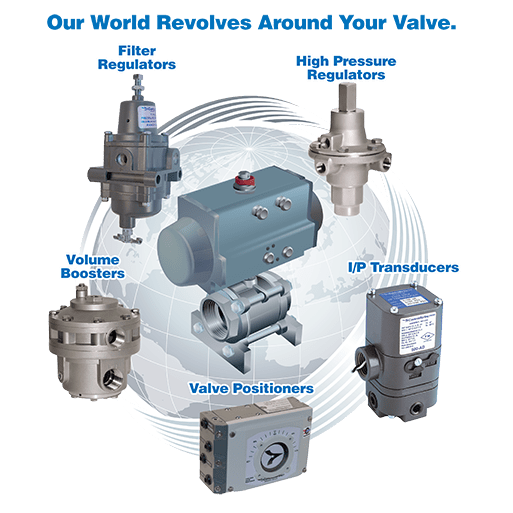Achieve Seamless Integration and Control With High Quality Structure Automation Controls
In the world of modern structure management, the importance of quality building automation controls can not be overstated. As modern technology continues to development, the assimilation and control of various systems within a building have advanced to be more sophisticated and reliable. The smooth operation and tracking of illumination, COOLING AND HEATING, safety and security, and various other building functions have become paramount for boosting passenger convenience, power efficiency, and overall operational effectiveness. The trip towards accomplishing true combination and control is a complex one, with factors to consider varying from system compatibility to cybersecurity. Embracing top quality structure automation controls is not just an issue of comfort yet a strategic critical for organizations intending to maximize their centers' performance and sustainability.

Development of Structure Automation Controls
Throughout the previous couple of years, the advancement of constructing automation controls has dramatically changed the means buildings are taken care of and operated. Originally, constructing automation systems largely focused on standard features such as regulating heating, ventilation, and air conditioning (HEATING AND COOLING) systems. Nevertheless, as technology progressed, these controls have come to be more sophisticated, permitting for a bigger series of structure systems to be incorporated and handled centrally.
The evolution of constructing automation controls has actually seen a shift in the direction of more smart systems that can adapt to transforming problems in real-time. This versatility is critical for maximizing energy efficiency and making certain occupant comfort. In addition, contemporary building automation controls now use functions such as predictive maintenance, remote surveillance, and information analytics, enabling center supervisors to make data-driven decisions to enhance building performance.

Advantages of High Quality Combination
The advancement in structure automation regulates towards more intelligent systems has emphasized the significant advantages of high quality integration in maximizing building operations and enhancing total efficiency. This centralized control likewise provides far better presence and insights right into building performance, allowing aggressive upkeep and optimization techniques. In general, the advantages of high quality assimilation in structure automation controls are undeniable, supplying raised effectiveness, convenience, and operational efficiency.
Boosted User Experience and Accessibility
Enhancing user communication with building automation controls with user-friendly layout and enhanced availability elevates the total experience for owners and center supervisors alike. By concentrating on individual experience, constructing automation systems can become a lot more efficient and easy to use. User-friendly interfaces, clear navigation, and customizable setups empower users to engage with the controls easily and properly.
Ease of access functions play a crucial function in ensuring that all people, consisting of those with specials needs, can make use of the important source structure automation manages with convenience. Incorporating functions such as voice commands, tactile switches, and color-contrasted displays can improve ease of access and make the controls a lot more comprehensive.
Furthermore, boosted customer experience brings about greater user complete satisfaction, increased efficiency, and far better decision-making. Occupants can change ecological setups according to their preferences, while facility managers can effectively take care of and keep an eye on building systems - control valves. On the whole, focusing on user experience and access in structure automation manages adds to a more efficient and smooth building environment for all stakeholders entailed
Lasting Practices Via Automation

In addition, automation can assist in the integration of renewable energy sources such as solar panels or wind turbines right into building operations. With automation, buildings can line up with modern-day sustainability goals go and contribute to a greener future.
Future Trends in Structure Control Systems
In anticipation of progressing and progressing technologies sustainability methods, the trajectory of building control systems is poised to embrace transformative techniques and cutting-edge services. One noticeable trend shaping the future of structure control systems is the increased combination of Expert system (AI) and artificial intelligence. These innovations enable buildings to adjust in real-time to transforming problems, enhancing energy consumption and boosting convenience for occupants. In addition, the Web of Points (IoT) is transforming structure control systems by attaching sensing units and devices to enhance and simplify operations performance.
Another vital fad is the emphasis on cybersecurity procedures to safeguard against potential risks to building automation systems. As structures become extra interconnected, making certain durable cybersecurity protocols will certainly be essential to guard sensitive data and protect against unauthorized access.
Moreover, the change towards cloud-based platforms is obtaining momentum, permitting systematized control and remote access to structure systems. This promotes simpler tracking, maintenance, and updates, enhancing the overall performance and versatility of building control systems. As innovation remains to development, these trends are expected to form the future landscape of building automation controls, driving development and sustainability in the constructed setting.
Conclusion
Future patterns in structure control systems are likely to concentrate on more improving automation abilities for improved energy effectiveness and overall efficiency. It is crucial for structure proprietors and operators to focus on the fostering of top quality structure automation controls to optimize building operations and attain lasting sustainability objectives.
In the realm of modern-day structure management, the relevance of top quality building automation controls can not be overstated. On the whole, the development of structure automation regulates continues to drive advancement in the structure management sector, using new possibilities for developing smarter and a lot more sustainable structures.
The development in building automation regulates in the direction of more smart systems has highlighted the considerable advantages of top quality combination in optimizing building procedures and enhancing general effectiveness. Generally, prioritizing customer experience and access in building automation manages adds to a more effective and seamless structure setting for all stakeholders involved.
It is vital for structure owners and operators to prioritize the fostering of quality structure automation regulates to optimize structure procedures and attain long-term sustainability objectives. - control valves